Art & Culture
Monthly Archive: December Art
Safavid Tile Project IV: The Artist behind the Arches
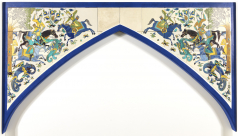
Some of the most noticeable objects in the ROM's Wirth Gallery of The Middle East are two friezes of tiles that would have been in the spandrels of arches. These were made in Iran in the last third of the 17th century under the Safavid dynasty, probably for a palatial building in Isfahan. The ROM also has parts of other spandrel friezes, and also some stray tiles that belong to yet other friezes. In order to understand these objects more fully, ROM staff have been undertaking research on the tiles.
Safavid Tile Arch Project III: The Palace of the Stables
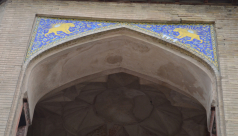
Written by Lisa Golombek, Curator Emeritus (Islamic Art)
Glimpses of Upper Burma: Clement Williams (1833-1879)
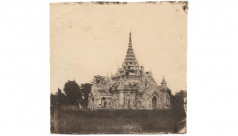
The recently-acquired collection of photography, documents, and artifacts provides a rare glimpse into Upper Burma before colonization, allowing us to consider the intersection of politics, trade, and religion in the 19th century. Written by Ron Graham and Deepali Dewan.
Safavid Tile Project II: Rebuilding the Friezes

The ROM's Wirth Gallery of The Middle East is blessed with two complete friezes of cuerda seca tiles that would have been in the spandrels of arches. These were made in Iran in the last third of the 17th century under the Safavid dynasty, probably in Isfahan. They were bought by the ROM in 1974 by Curator Lisa Golombek together with a number of other tiles that make up parts of these friezes, or sometimes individual tiles.
Safavid Tile Project I: The Technology
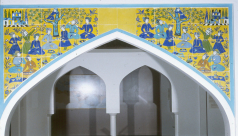
Some of the most noticeable objects in the ROM's Wirth Gallery of The Middle East are two friezes of tiles that would have been in the spandrels of arches. These were made in Iran in the last third of the 17th century under the Safavid dynasty, probably for a palatial building in Isfahan. The ROM also has parts of other spandrel friezes, and also some stray tiles that belong to yet other friezes. In order to understand these objects more fully, ROM staff have been undertaking research on the tiles.
Kalighat Paintings: Murder in the Collection
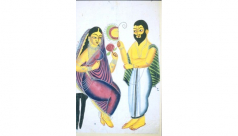
A notorious murder case is one of the subjects of the ROM’s collection of mid-nineteenth century Kalighat paintings, an urban folk art style that developed around a popular Kali temple in Kolkata, India. Written by Piali Roy.
When Things Go Wrong for Right Whales
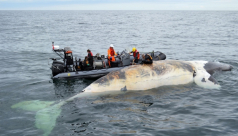
Guest blog written by Environmental Visual Communication student Viridiana Jimenez
The death of seventeen right whales in 2017 represents a loss of over 3% of the population. The significance of this loss has sent the scientific community into a panic. Their deaths were primarily caused by ship collisions or entanglements with fishing gear. As frequent visitors to the Gulf of St. Lawrence, we must now work together to save this species from extinction.
When Whaling is Your Tradition
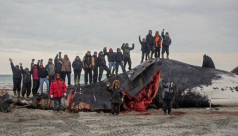
Guest blog written by Environmental Visual Communication student Ursula McClintock
In some Indigenous communities around the world, whaling is as much a part of their tradition as my family’s turkey dinner at Thanksgiving and Christmas. Whale hunting has played an integral role in feeding Inuit communities for millennia. Bowhead whales, among many other species of whales, were hunted to near extinction at the turn of the 20th century. Yet more often than not, Indigenous communities are cast in the same light as the commercial groups that are responsible for the near collapse of populations of these iconic marine animals.
Trees for Life in Lakefield
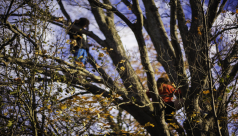
Guest blog written by Environmental Visual Communication student Fenella Hood
When Rebecca Rose left her home in Leslieville and moved her three young children to the quaint village of Lakefield, she felt secure in the belief that she was improving their lot in life. Then one day a notice was slipped through her door from the Township of Selwyn announcing her next-door neighbour's severance application to build a second house and increase his selling power. His small corner lot boasts a stand of seven mature trees that will need to be cut down to make room for the build. “It felt like being kicked in the stomach. I don't want those trees to die, and I don't want to tell my kids.”
Make Plastic Reduction Part of Your 2018 New Year's Resolutions
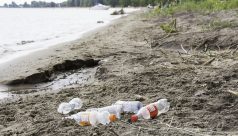
Guest blog written by 2017 Environmental Visual Communication student Cristina Bergman
Every year, 10,000 tonnes of plastic enters the Great Lakes. Imagine 55 jumbo jets of plastic crash landing in the lakes each year. In this province alone, 3 billion plastic bottles are sold annually, but only half are recycled. The other 1.5 billion bottles end up in landfills or littering the environment. As the only province that borders the Great Lakes, Ontario has an obligation to protect this vast, irreplaceable resource. But is the province stepping up?
